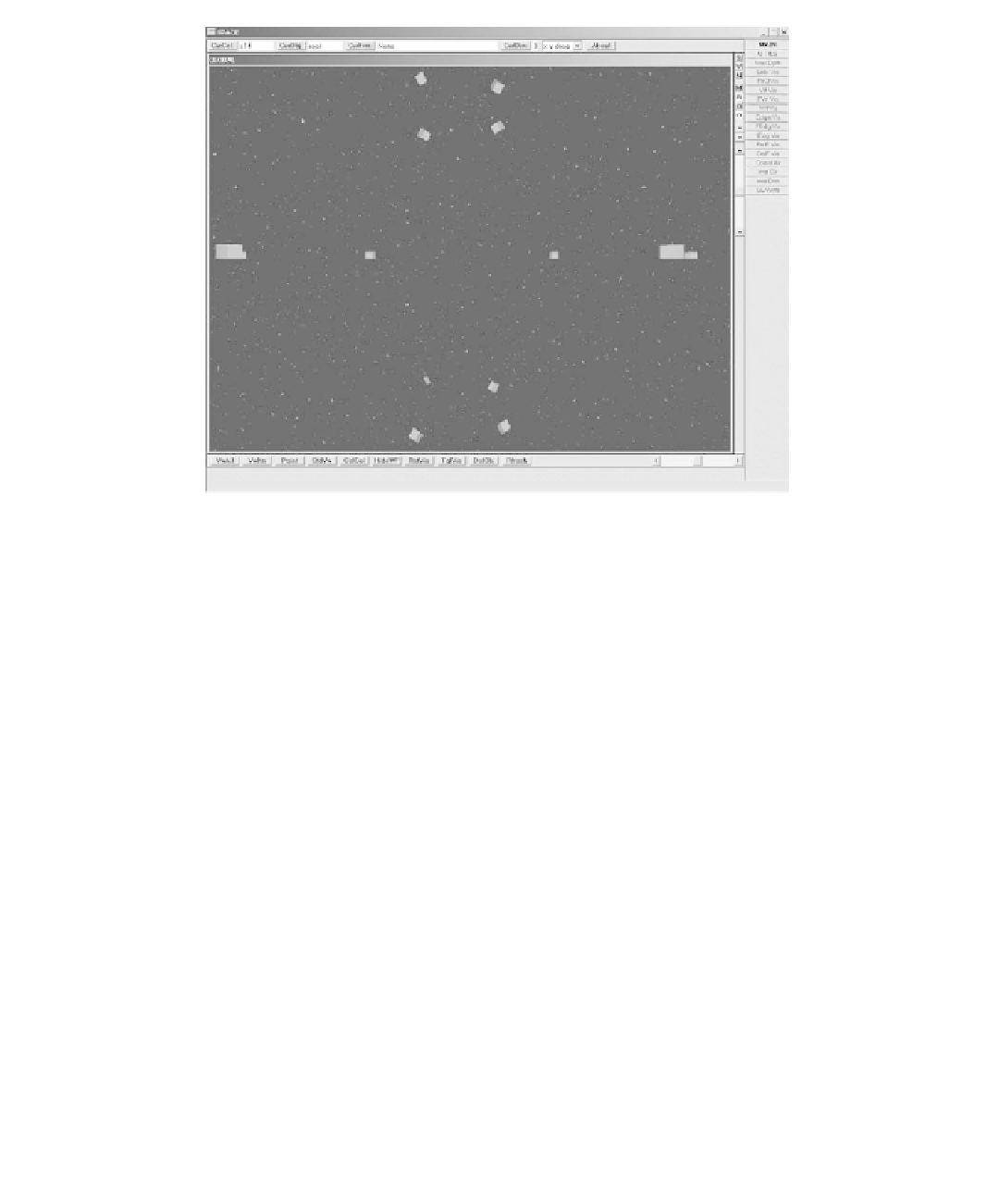Graphics Reference
In-Depth Information
A view from inside
S
3
.
Figure 16.3.
to the right and below the graphics area are various buttons that perform view manip-
ulation actions, such as zooming, spinning, changing the rendering mode, etc. As men-
tioned earlier, we are really showing
S
2
¥ [0,1]. The floor
S
2
¥ 0 and ceiling
S
2
¥ 1 are
shown in brown and blue, respectively. The (abstract) cell structure of the sphere has
been collapsed to consist of one 2-cell and one 0-cell. There is an option to show the
0-cell, which would then show up as a column. As a 3-dimensional manifold the world
consists of a collection of 3-cells with identifications along their boundary and to
display a view we simply look through these cells. We have allowed ourselves to look
straight ahead through six cells. The “walls” in the distance are boundary walls of the
last cell we see through. They are colored to look like a sky with stars and this is
intended to indicate that we could look further. There is also a
single
yellow sphere
in our world. The fact that one sees more than one is caused by the fact that a line
of sight goes several times around the sphere. Although a person looking in a real
empty sphere would only see the back of their head, the reason Figure 16.1 shows
multiple spheres in staggered positions and deviates from the theoretical view is that
our polygonal representation of the sphere has modified the geometry and produced
different geodesics. Figure 16.2 is the wireframe local view of the cell structure that
is used to represent the world in Figure 16.1. The red cone represents the observer.
Figure 16.3 shows the view from inside the three-dimensional manifold
S
3
. The
cell structure of the sphere has again been reduced and consists of one 3-cell and one
0-cell. The starry sky in the distance indicates the edge of our specified viewing
distance. The yellow boxes are what we see of the
single
box that we created in our
world.

